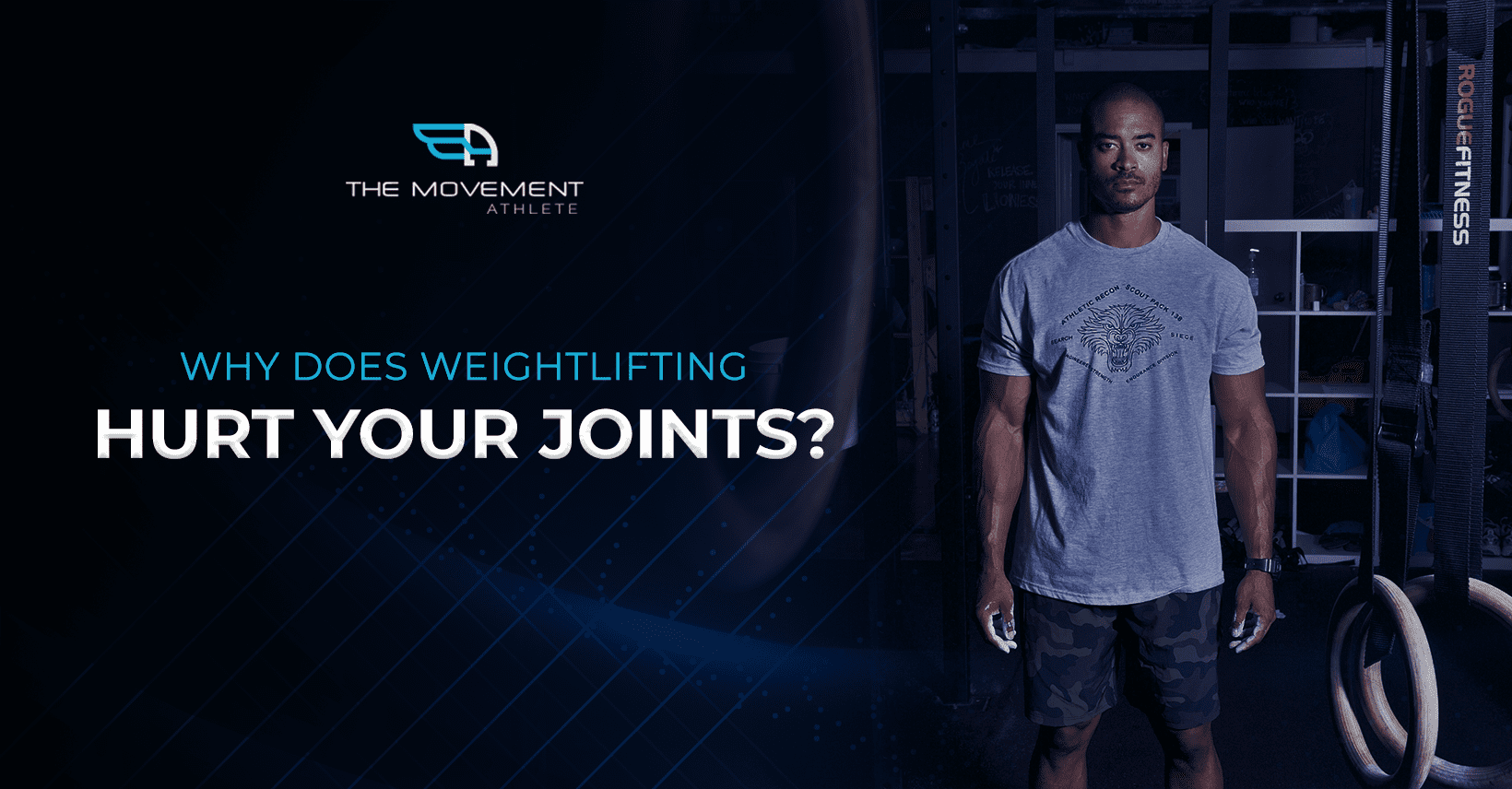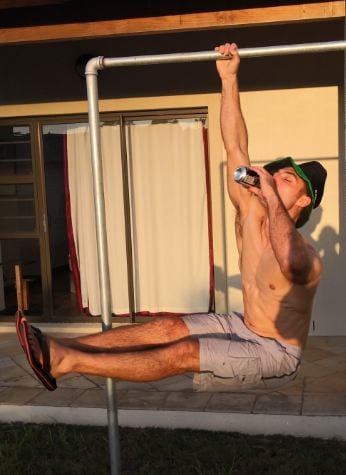
Join the tribe of Movement & Calisthenics Athletes – people just like you that are working with their own body weight to get strength, lose fat build muscle, recover from injuries and live their best lives!
Why Does Weightlifting Hurt
your joints?
Jacques has been lifting weights for years that lead him for years of immobility with aches and pains.

“I’ve been working out for years. I ended up getting strong and maybe not so mobile, with some impingement in my shoulder and that’s when I thought, “Okay, something needs to change.”
- Jacques O’Connell, 35, Physicist
He’s not alone though.
There are hundreds and thousands of other weightlifters ditching weight lifting for calisthenics.

“When I was in High School I ran the 4X100 meter relay and I was the second leg. Long story short, the disparity in my hip from that point on made my shoulders unleveled. I continued to lift heavy and the difference in my shoulder level affected my one shoulder negatively. My stubbornness kept me from getting it fixed.” – Brad
Brad’s case isn’t quite the same but still falls in a similar category. He got a minor injury from a different sport. Lifting weights didn’t help in his recovery and actually made it worse.
“I was doing just compound lifts, squats, deadlifts, bench press. I was starting to get tendinitis in my hips and then that led to my lower back so I knew I had to just step away from it.
I was just tired of aching all the time and feeling like I was losing mobility. I’ve always been interested in calisthenics but I never knew how to get started with it. Then I found (The Movement Athlete) and said oh, this looks great.
- Anthony Monte, 37, Airline Pilot
Whatever the cause, aches and pains sometimes come and go, but the thing is that they always come back once you get them if continue lifting weights.. How dreadfully annoying! Wouldn’t it be nice to feel pain free?
I definitely didn’t want to become one of those old guys always complaining about his back, knees, shoulders, and elbows. Warning the young’uns to take it easy in the weight room lest they become like me.
If you’ve been lifting weights, you must probably have gotten these nuisances that can potentially be life-aggravating aches and pains from the weight room.
Why the aches and pains?
Don’t start bashing on weightlifting immediately.
There is research suggesting that weight lifting on its own does not create joint problems and helps your joints to become stronger. This is done by strengthening the muscles around the joint so you can get more support.
How about that? So who should you blame regarding your aches and pains?
Well, it’s still weightlifting and here’s why:
I should start by saying that with any sport or activity, there will be a chance that you’ll experience some pain or strain like what happened to Brad. It’s almost inevitable when you’re moving your body. But these chances increase depending on how you perform in the specific activity.
For weightlifting, your injuries, pains and aches come from 2 major factors
- Using too much weight
- Performing exercises with bad form
These are the main culprits of those dreadful injuries. This isn’t very uncommon in weightlifting because of the nature and culture of the approach.
Too much weight
In weight lifting, there’s a common problem called ‘ego lifting’. It’s basically lifting too much weight than you can handle to show off. Most of the time, your gym is crawling with people and it’s very tempting to flex your strength. I’m telling you that it’s a very bad decision.
Lifting too much weight will put too much pressure on your joints and muscles. You’ll be experiencing joint pains and muscle tears or pulls if you’re not careful.
What’s worse is when you’re doing more complex and dangerous movements such as the overhead barbell shoulder press. If you’re holding too much wait, the barbel might straight to your head hammering you down to the ground. Ouch!
Sadly, using weights is very prone to this type of problem because of the culture inside the gym.
Bad Form
Another problem is training with bad form. You can get yourself hurt even if you’re only using light weights if you’re not careful with your form.
Weight lifting movements make use of complex movements. Small incorrect changes in your form could lead to massive nasty effects. Take the well-renowned bench press for example. Get a challenging weight and do some reps with your elbows out will get you an impinged shoulders in no time. Do a deadlift with improper form and you might just end up in a hospital.
So if you’re joints already hurt from all your improper gym time, you need to get some rest first. Take some time off. Don’t add damage and make it worse. The pain is there to let you know that something needs to change.
Go to your local physiotherapist and ask for medication and recommendations. He/she’ll probably ask you to rest, too.
After getting some time to rest, make sure you already have the go signal with your physiotherapist. Once your joints are ready, it’s time to switch up your training and heal those joints!
What could have you done better?
A better way to go about it is to switch up your training by choosing a more progressive, safer and still effective approach to your fitness goals.
Calisthenics offers what weightlifting can provide, too, and more.With calisthenics training, you can eliminate the dangers that are lurking around your joints.
- First of all, since you’re going to train with bodyweight, you’ll not put much stress on your joints.
There’s no risk of “lifting heavy”. You’ll be safe even if you try out an exercise that you cannot do yet.
For example, if you try to do a regular pushup but you’re not yet strong enough, you can just drop down to the ground. Compare this to being crushed to death with a barbell you cannot lift.
- Also, calisthenics eliminates ‘ego lifting’.
Secondly, because you can train alone in your own home for free. No need to show off to anyone there. Number two, you’ll automatically drop if you can’t do the exercise yet. Just train slowly and trust your program and approach.
- Next thing that helps you with your joints are the quality of movement that calisthenics exercises can provide.
Especially foundational calisthenics exercises such as pull-ups, pushups, dips and bodyweight rows strengthens not only your muscles but also your joints. Your joints are worked when training these movements, making them stronger than ever.
If you’re really interested in making your joints bullet-proof, you can even train them specifically. Pseudo planche lean hold is an excellent exercise to solidify joints in your arms and wrists.
The key here to train your joints is similar to the key concept in your whole workout; train gradually. Take it easy if you’re just starting out and progress accordingly and gradually.
- Calisthenics exercises demand more range of motion from you. This, in return, trains your mobility.
Mobility keeps your joints pain free and allows you to move around without any restriction. Isn’t it fun to be able to move without any limitation throughout the years?
To wrap it up:
If you want to get stronger, leaner and healthier while still keeping your freedom to move and eliminating joint pains, weight lifting isn’t really the best option. The risks are too much compared to the alternative.
Calisthenics is the way to go. If you’re having trouble knowing where to start, The Movement Athlete Academy provides an excellent adaptive approach to your training.
You’ll get to train without worrying about your joints aching.
Stop hurting your joints and train with calisthenics.